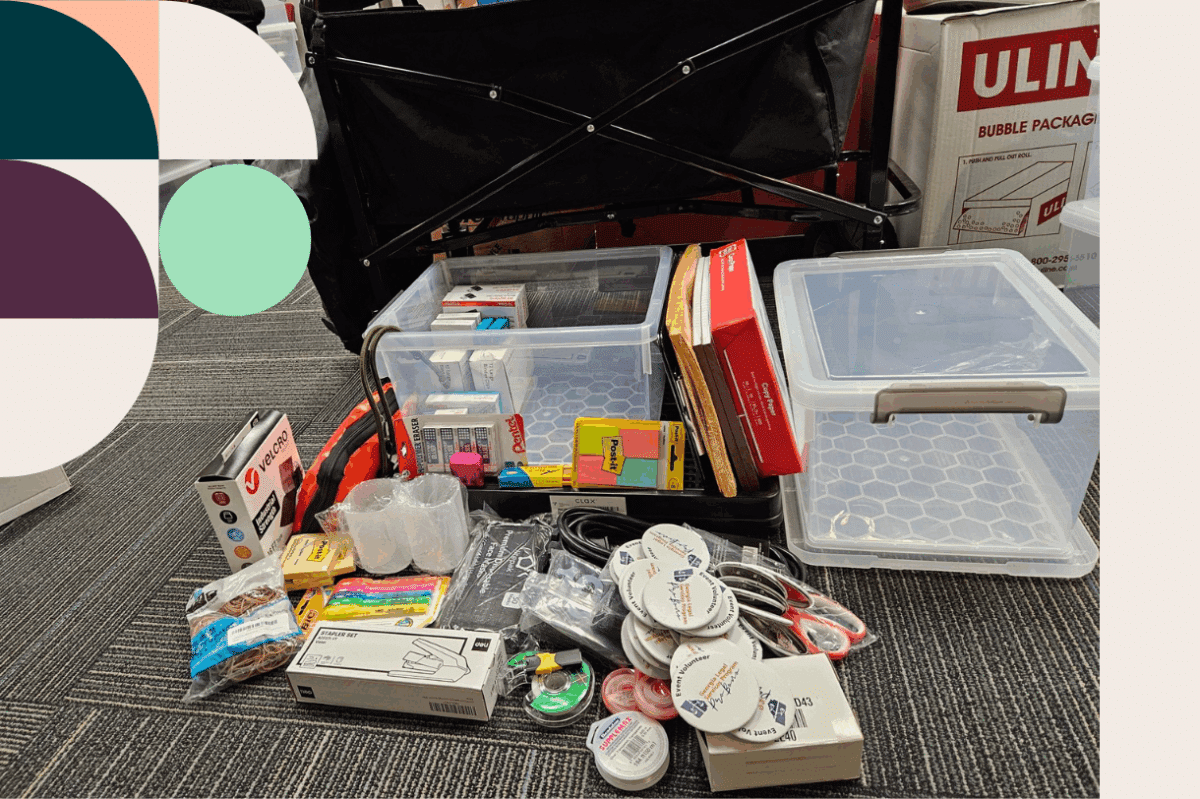I recently sat down with Rachel White-Domain, Director of the Women and Survivors Project at the Illinois Prison Project. Rachel has worked extensively with incarcerated women and specifically focuses on representing survivors of domestic violence, sexual violence, and sex trafficking. She is a leading expert in trauma-informed legal advocacy, and we had a fascinating and wide-ranging conversation about trauma-informed lawyering, how trauma impacts legal outcomes, and how to get started in using a trauma-informed approach in your pro bono practice. Learn more about her work:
- IF: What is trauma-informed legal advocacy?
RWD: Trauma-informed legal advocacy is an approach to doing legal work that infuses both an understanding and, importantly, a respect, for how trauma impacts the people that we’re working with. That’s the critical piece to understand: sometimes when legal workers are interested in trauma-informed legal work, there’s an apprehension that our lane is to do legal work; we’re not mental health providers. And that’s true, and it’s important to recognize. But the most important piece of doing trauma-informed work is about having a respect, humility, curiosity, for the ways that trauma can impact people. And we can absolutely do that, even as lawyers. So it takes some commitment to learning about trauma and to skill building, but trauma-informed work is in how we treat people; it’s not about becoming a therapist. Trauma-informed work is about counteracting the experience of abuse, not unpacking trauma, and we can do this in the context of just about every interaction we have with out client.
- IF: How might past trauma impact a client’s legal case?
RWD: If we’re doing a good job as lawyers, we’re navigating our clients through what is often a difficult, if not re-traumatizing, legal system, and along the way we are empowering our clients by providing clear information and supporting their choices and decisions.
Trauma can get in the way of [clients] reaching [their] own goals. A client may have a goal of getting custody of their children, but there may be things that come up with trauma that get in the way; for example, if the client is afraid of what the other parent is going to do or say because of past violence and that affects their ability to participate in the case because they are constantly being triggered by memories of past violence, or afraid of another incidence of violence.
For people who have experienced a lot of trauma, that dynamic can literally cause our brain to be in “survival mode,” making it difficult or at least very energy-intensive for people to fully participate in proceedings or even conversations with lawyers.
- IF: What are some of the challenges of working with trauma survivors? How does TILA help address those challenges, both for attorney and client?
RWD: When we’re not attentive to [the impact of] trauma — around memory, around trust, and around triggering — it can interfere with our ability to get the information you need, and to have the client be fully present in pursuing their case.
We can’t come in and assume that merely by virtue of the fact that we are someone’s lawyer, we are entitled to the basic trust that we have their best interests in mind. The focus should be not on the client building trust with us, but on us building trustworthiness with the client. Trustworthiness [versus trust-building] gets us away from the approach of, “I have to figure out what specific traumatic experience impacted my client in what neurological way so that I can extract information from them,” which is not the point of trauma-informed work.
The question to ask is “How can I approach this client as my best, most open self, so that I can skill-build in relation to this individual person, applying what I have learned generally about trauma?” It’s an approach; not a rulebook. And often, for lawyers, this should start with building up your trustworthiness including by clarifying where you stand on things, your commitment to the client but importantly also your limitations, as well as an explicit awareness that this stuff is hard including in ways that are specific to trauma.
It can be as simple as just putting it on the table. For example, I will often “frontload,” or state out loud to my client if I know something is often hard or triggering for many people. So, if I’m interviewing about traumatic experiences, I might say, “I’m going to ask you some questions about emotionally and physically painful things that have happened to you. And it’s going to be heavy, but you’re totally in control of your own story so please tell me if you need to take a break or if you want to approach this in a different way. For some people, sharing about hard things that have happened can make it feel like it’s coming up all over again; it can be exhausting or scary. But this is your story, and you’re in control of this story. It doesn’t have control of you.” In other words, acknowledge that stuff is real, and it’s hard, from the get-go, and remind clients that you’re going to take their lead. People won’t always have a suggestion for how they want you to proceed, and that’s okay. It’s about communicating that, they are in control, which is the opposite or counter to the traumatic experience itself, where a key element of violence is that control is taken away.
One thing that can impact the case in a lot of ways is what I call “leaving the door open.” I might say, “You told me a lot of stuff that was really helpful. I often find that people think of things later that they want to tell — or sometimes it might even be different from what you told me today.” By leaving the door open, we allow the person to share new information in a later interview. Those could be new things that they didn’t remember at first and remembered later, and it could also be related to trust-building, and it doesn’t matter which, as long as we can get those new or different details later, as soon as it’s possible for them to do that. And for some trauma survivors, there will be pieces of memory that are not going to be immediately retrievable, at least not without more trauma-specific assistance from a mental health provider. That is a limitation of our work as lawyers.
- IF: Can TILA help improve clients’ legal outcomes, and if so, how?
RWD: Information-gathering can be a challenge: asking for enough information, and asking about it the right way. Let’s say you’re interviewing your client and you’re not taking a trauma-informed approach. Relevant to your case is trauma that happened to the client, or their children. One mistake is making the assumption that because this is something you need for the case, and you’re asking the question, you’re going to get the information you need upfront, because obviously the client wants to win their case. But that’s just not how things work for people who’ve experienced trauma.
In a non-trauma-informed-approach, you’re making those questions the first thing you ask, because it’s what you need to know for the case. So you think that makes sense, but you’re asking before you’ve had the chance to build the relationship. And, you’re also asking before you’ve explained why you need that information. You’re just assuming that because you’re the attorney, they’ll answer any question you have.
They’re going to give you an answer, sure, because they’re trying to be helpful, but 99% of the time, the answer is not going to be the complete answer. Because the thing that people learn when they’ve experienced trauma is that they constantly need to assess whether they are safe. That’s the key element of what trauma — especially repeated trauma — does to humans, and I’m talking about not that someone has consciously decided to constantly assess for safety, but that the structure of the brain is literally rewired by trauma so that the brain itself is subconsciously constantly assessing for danger, because that is the adaptive response to experiencing constant trauma and danger, which is what a lot of our clients have experienced and continue to experience.
So in that moment, they, or the protective systems of their brain, are trying to figure out, who are you? What is your role, really? Not just, I’m an attorney. But what are your respective roles in this situation, what are the dynamics? Are you a safe person; are you going to understand and believe what I have to say? And can I as the attorney handle what they have to say, like will I be emotionally overwhelmed by it? Be horrified or even defensive? So if my first question out of the gate is, did this sort of abuse happen to you, so much of my relationship to the client is already settled, often for the worse. I got an answer based on them trying to figure if I was a trustworthy person and whether I could handle their disclosure of trauma, not based on what they actually have to share.
The client may say part of what happened. Even as well-meaning attorneys, we may be trying to be kind, so we start saying, “That’s the worst thing I’ve ever heard. I can’t believe that happened to you! I can’t believe that could happen to anyone!” That’s a signal to the client that you’ve never experienced something like this — and chances are, that’s not the worst thing that’s ever happened to them, if it’s the first thing they tell you. So now the client has to be in a position where they have to respond to your reaction, and that narrows the role they can be in, because now they are worried about you. So there’s a lot of dynamics here, and an awareness of trauma, and how to ask even just that first question, can actually help us to get better information, which is often the key to the case, even as we pay attention to goals perhaps outside of the ultimate legal goal.
So I would ask, What is the context of the first question? Do we have a relationship? Have I worked on building trustworthiness? Am I ready to receive some really traumatic information, and hold it from a place that’s open, and doesn’t pigeonhole the client into having to respond to how I feel about it?
For example, let’s say a client is talking about a violent interaction with their partner. And maybe part of the story was that your client defended themselves — but they don’t give you that in the first conversation. I’ve moved on because I thought they answered, one and done, or maybe I was uncomfortable with the subject matter or even afraid of triggering them too much and tried to move on quickly, now they’re stuck with the story, and I’m stuck with the story. Later it comes up with a negotiation, and the other side says, “My client has an injury from that interaction,” and they have proof — it derails your entire case.
That too-early story is almost never going to be the full story. And that’s a place where you can get messed up later in the case, because you didn’t take the time to really think about what it means to be asking for this information, creating the right context for the ask, and leaving the door open for that information to develop over the course of your relationship and over the course of the case.
It’s not about being the most nice, or gentle, and it’s really not about “avoiding all the triggers,” although certainly we will be attentive to them. Sometimes when we get too focused on that, from a well-meaning place, we can do more harm and get further from the client’s legal goals. We’re afraid to ask about trauma because we know it’s going to be triggering for the client. Or we are afraid to explain what our limitations or boundaries are, when trauma-informed work is actually about clarity and transparency.
- IF: What is a trauma-informed way of responding to a difficult disclosure from a client?
RWD: You can and should acknowledge and appreciate someone sharing about traumatic experiences. For example, “That sounds really scary.” Or, “That sounds really hard.” Or, “I know you know this, but you didn’t deserve for that to happen to you.” But don’t act like someone’s made of glass because they’ve been through trauma. Sometimes lawyers, especially if you are not used to asking about trauma or hearing about trauma, can overdo acknowledgement in a way that makes it more about us than the client. For example, we may interrupt a story about past trauma just to say these kinds of things. Acknowledgement is super important. But don’t do it in a way that makes it about you or curtails their access to the full range of their humanity, such as by defining someone by their experiences or assuming something like sadness or even fear is the only emotion that can be associated with trauma.
Also, if you went there, meaning asking about trauma, because you needed that information for the case, you can gently push the client to stay in that place of talking about a hard thing to a certain extent, or you can circle back around to it. Sometimes it’s so heavy clients will share a little and then immediately jump to another topic. It’s okay to come back to the hard stuff. It will be triggering, and here’s where it’s important to acknowledge that we are doing trauma-informed work within a traumatic context and so everything is going to be a trade off. Communicate with your client, but don’t just back off from a hard conversation because they changed the subject. Often people will take emotional breaks by changing the subject, and you can kind of rotate in and out, and that can be a good rhythm for some people.
And avoid ascribing meaning or sometimes even language to what someone has been through, at least in most contexts. So for example, a lot of people were harmed by their parents in childhood. But may have complicated feelings about that parent, such as wanting to appreciate that the parent “did the best they could” or protected them from community violence, or something else. It’s not our job to be like, “They were an abuser and that’s it.” That’s not our role. And when we need to do that strategically in the case, we should talk about it with our client explicitly.
The most important thing is: nobody wants to be managed. If you’re worrying about something, worry about it — and work on it — with your client. “On our next phone call, I have to ask you about some of the heavy stuff, from when you were a child. I’m only going to ask you about things I need to know for your case. I’m worried that this will be a hard conversation, and I know there might not be a solution to that or a way around that, but I just want to say it out loud. And if you do have ideas about how you want me to go about this conversation, please tell me, because I want to take your lead in how we unpack this part of your story.”
Whatever you do, maintain your view of the client as a human and a person with agency. If stuff is hard and might be about trauma, you can problem solve around that together. We can acknowledge this stuff in simple terms without stigmatizing or clinical language. That by itself is trauma-informed work because it normalizes it. This is something that a lot of people deal with.
- IF: What advice would you give to attorneys who are interested in representing pro bono clients with trauma histories, but feel apprehensive or unprepared?
RWD: It’s not about asking or saying the perfect thing at the right moment. Your focus should be on the relationship, and not on getting the question right or having the right thing to say. There are no magic words. The key is to come into this work with humility and curiosity, because chances are your background experience is different from the person you are working with. Allow them to be an expert [in their own life experience, trauma history, and goals], and help you to understand.
There’s only one of you in the world, and there’s only one of your client in the world, and the relationship you build is going to be unique. Think of it as a journey where we are building an attorney-client relationship that reflects awareness of trauma, not trying to memorize a perfect question or response. At the end of the day, the success depends on the whole of who you are and your sincerity and willingness to learn and try, not on having the exact right words at the right moment.
Interested in pro bono opportunities with IPP? Check out the Let Freedom Ring Campaign, which represents elderly incarcerated veterans seeking commutation of life sentences.





